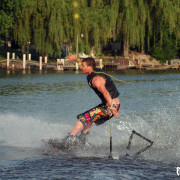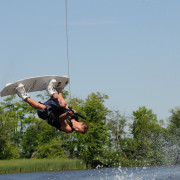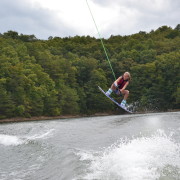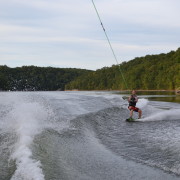Heelside Backroll
A heelside backroll is typically the first invert we will teach at camp, and is a right of passage for moving into the world of inverts. This trick is basically a side flip, or cartwheel type motion.
Prerequisites
When I learned this trick the hardest part for me was taking the exact same approach to the wake on every attempt. You will want to land on the exact same spot of the wake each time; right on the downslope of the second wake. I think it helps to have heelside wake-to-wake 180s dialed in before attempting inverts because they help teach edge control towards the wake. Also, if you can spend a little time on the trampoline it will make your first couple of attempts much easier on the water.
For the Driver
Slow the boat down 2-3 MPH from normal boat speed. A big mushy wake will force the rider to edge all the way to the top of the wake before throwing the trick, and the slower speed will take away some of the fear of trying something new. On the first few attempts by the rider, just concentrate on initiating the trick correctly off the wake and landing in the water of both wakes.
The Approach
After trying a couple of slow speed attempts, bring the boat back up to normal speed and go for the trick wake-to-wake. Use a normal heelside wake-to-wake cut. It’s very common for people to throw this trick early, or before they are off the wake, so concentrate on edging all the way to the top of the wake before throwing the backroll.
In The Air
Keep your head looking toward the boat, and throw your head and rear shoulder toward the tail of your board while pushing your hips toward the tip of your board. Keep the handle low and close to your hips throughout the rotation. Most people have a tendency to bring the handle up toward their head, which slows the rotation down. Halfway through the rotation, pull the handle closer to your hips. This will do two things, speed up the rotation to help you land on your board, and give you correct body position when landing, making it easier to give line tension back to the boat.
Trouble Shooting
These are the areas most people have difficulties when learning backrolls.
I’m under rotating this trick. There are generally two mistakes that will cause this:
Throwing the trick too early.
Solution: Practice some more slow speed one wake attempts where you begin to make the complete flip rotation and land in the middle of the wake.
Bringing the handle up towards your face.
Solution: Push the handle toward your hips after you initiate the flip.
The handle pulls out of my hand when I land.
Solution: This is caused a lot of times by the bad habit of letting go with your rear hand in the air. Hold on with both hands and pull the handle in halfway through the flip. You can also have your driver cut back on the throttle the first few times you land this trick.
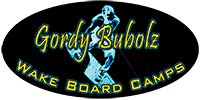
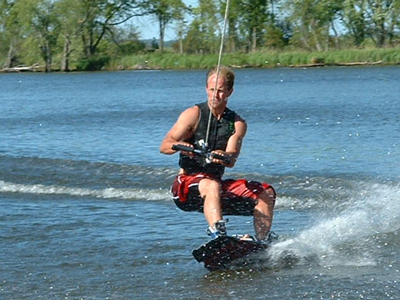
 Hips: The position of your hips is the key factor for creating leverage when edging toward the wake. Keep your hips up and in front of your shoulders. Bad habit: Hips drift back behind the shoulders, and the board softly edges at the wake by the fins holding the direction, instead of the entire Heelside edge.
Hips: The position of your hips is the key factor for creating leverage when edging toward the wake. Keep your hips up and in front of your shoulders. Bad habit: Hips drift back behind the shoulders, and the board softly edges at the wake by the fins holding the direction, instead of the entire Heelside edge.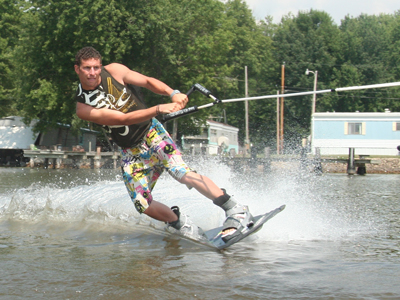 Hips: Hips should be up and in front of shoulders when edging toward the wake. Bad habit: Hips are low and butt is sticking out. While this posture will in fact create good leverage edging toward the wake, it will always lead to forward falls on landing.
Hips: Hips should be up and in front of shoulders when edging toward the wake. Bad habit: Hips are low and butt is sticking out. While this posture will in fact create good leverage edging toward the wake, it will always lead to forward falls on landing.